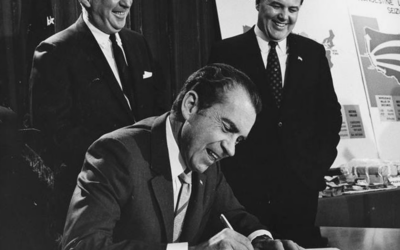The History of the Vape Pen
On the Shoulders of Giants
Just as we wouldn’t have the Ferrari without first making the Model T, we wouldn’t be carrying vape pens today if it weren’t for the Ancient Egyptians.
Here’s the story of where our vape gear came from.
Traders from Asia brought cannabis to Egypt in the 12th century BCE, and by the 5th century BCE the Egyptians had created an early method of vaporization. They laid herbs and hemp seeds on red-hot stones and heated them to just below the combustion point. Instead of smoke clouds, this produced a light, aromatic vapor that was inhaled during rituals and celebrations.
Two thousand years later, Iranian physician Abu’l-Fath Gilani invented the hookah. Aristocrats in the Mughal Empire used it to create vapors tinged with cannabis, opium, and flavored tobacco.
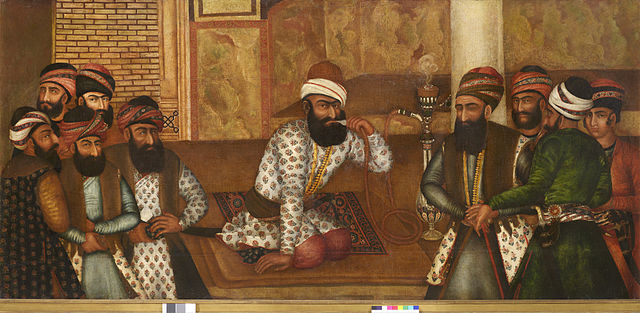
Hookah smokers in Persia in 1755. Image courtesy of Wikipedia.org.
The hookah — which was little more than glassware connected to rubber hoses — was vaporization technology at its most advanced, and it would be four hundred years before the next breakthrough.
False Starts
We nearly had vape gear before World War II.
In 1927, Joseph Robinson went to the US Patent and Trademark Office in New York with specs for a “Mechanical Butane Ignition Vaporizer.” He intended to create a “vaporizing device for holding medicinal compounds which are electrically heated to produce vapors for inhalation.” The device seemed good on paper, and Robinson received his patent in 1930 — but that was the last we heard from him. He never produced a prototype.
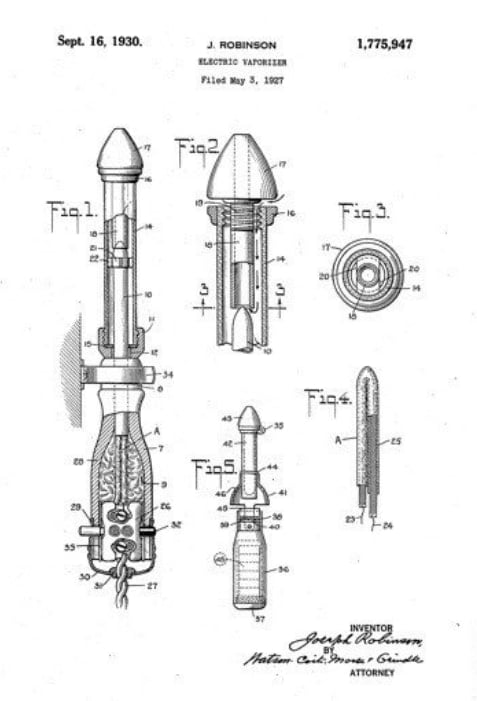
Joseph Robinson’s plan for a vaporizer. Image courtesy of govype.com.
But in 1963, a scrap yard worker named Herbert A. Gilbert did.
“I am just your normal, average, logical guy,” Gilbert said in a 2015 interview. “And logic told me to define the problem and then develop a solution.” The problem, as Gilbert defined it, was recreational smoking. Ubiquitous as it was, he sensed its risks were more profound than commonly realized. (His hunch was vindicated the following year, when the surgeon general’s “Smoking and Health” report first warned the public of the link between cigarettes and lung cancer).
Gilbert said, “I had to find a way to replace burning tobacco and paper with heated, moist, flavored air.” He built and patented a battery-powered “smokeless non-tobacco cigarette” prototype that he simply called “The Smokeless”. He then brought it to tobacco companies and pitched several different flavors, including mint, rum, and cinnamon.
Big Tobacco passed. As Gilbert reported, they “did what they could to protect their markets.” They assessed the Smokeless as a threat, and (correctly) figured they could kill Gilbert’s brainchild by simply ignoring it. The Smokeless didn’t find a producer.
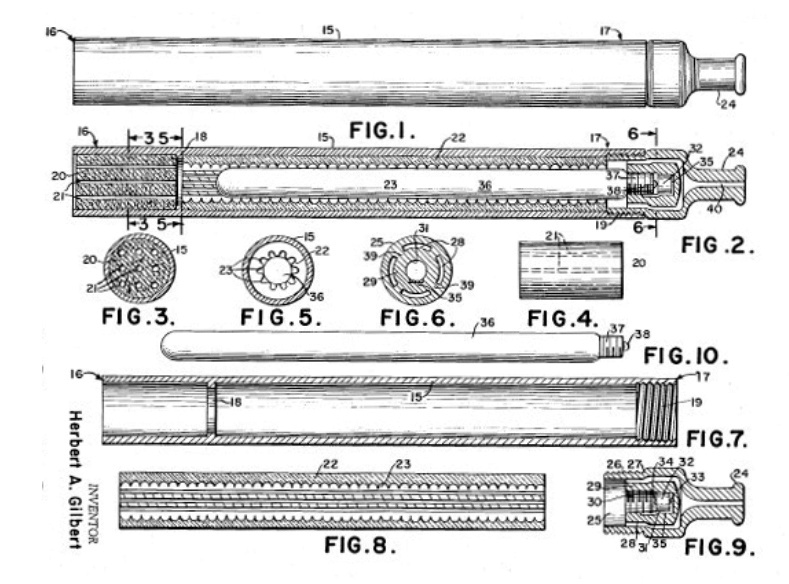
Gilbert’s design for “The Smokeless.” Image courtesy of ecigarette.com.
In the late 1970s, Phil Ray took a swing at vape tech. Ray had helped develop the first microprocessor and had also held a management position in the Apollo Space program. And, like many of his counterparts of the day, he was also a smoker, and sensed that Space-Age tech had the potential to modernize the cigarette (which he must have viewed an absurdly primitive nicotine delivery system, especially in this new age of unmanned rockets and jets).
Ray and his collaborator, Dr. Norman L. Jacobson, created a smokeless cigarette prototype that produced “tobacco-flavored air.” They founded a company, American Tobacco Products, Inc., and secured a press run. However, they hit a snag when pursuing FDA approval. The product never launched, and the reign of the cigarette continued.
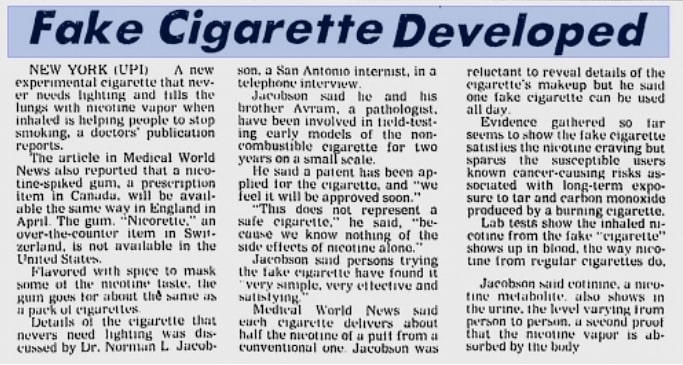
A Spokane Daily Chronicle headline from February 16th, 1980.
One key part of Ray and Jacobson’s legacy, however, endures; they were the first people to use the word “vaping”.
The Final Breakthrough
American efforts to create a mini-vaporizer had stalled out, so as it happened the first successful vape tech came out of the East. The e-cigarette as we know it was conceived in 2003, when a Chinese pharmacist named Hon Lik had a dream.
Formerly a three pack-a-day smoker, he’d kicked the habit after his father died of lung cancer. As Hon tells it, he routinely fell asleep with a nicotine patch on is arm, and night dreamed he was lost at sea. But before he drowned, the ocean water turned to vapor, allowing him to draw breath and reach solid ground.
Hon drew up an early design for an electronic cigarette. It called for a “high-frequency, ultrasound-emitting element to vaporize a pressurized jet of liquid containing nicotine.” The final version of his e-cigarette used an atomizer (a heating element) to vaporize a liquid nicotine solution. It hit the Chinese market in 2004.
“Some in China called it the ‘fifth invention’,” Hon says. “After navigation, gunpowder, printing, and paper.”
His employer, Golden Dragon Holdings, took the e-cig to Europe in 2006. (In 2007 the company briefly changed its name to Rú Yān, which literally translates to “resembling smoking.”)
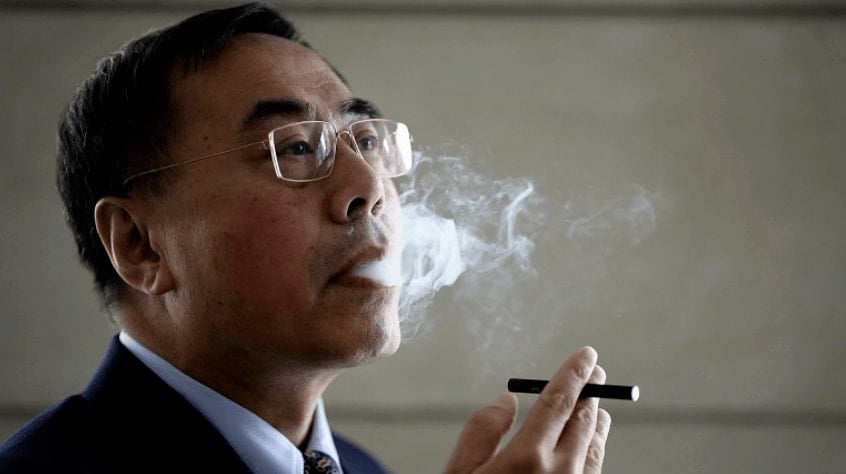
Hon Lik. Image courtesy of vapetrotter.com.
A half-decade later, e-cigarettes arrived in the US. The vape option had mass appeal and a subculture formed around it; in 2014, the Oxford Dictionary word of the year was “vape.” By that year, recreational cannabis had been legalized in several states. Entrepreneurs saw an open lane and began repurposing vape technology for cannabis extracts.
The Age of the Vape
It’s a new chapter for cannabis consumption. The market is growing, enthusiasts are building custom mods, and cultivation and extraction techniques are continually being perfected. By 2025, the vaping industry is projected to be worth $46.9 billion.
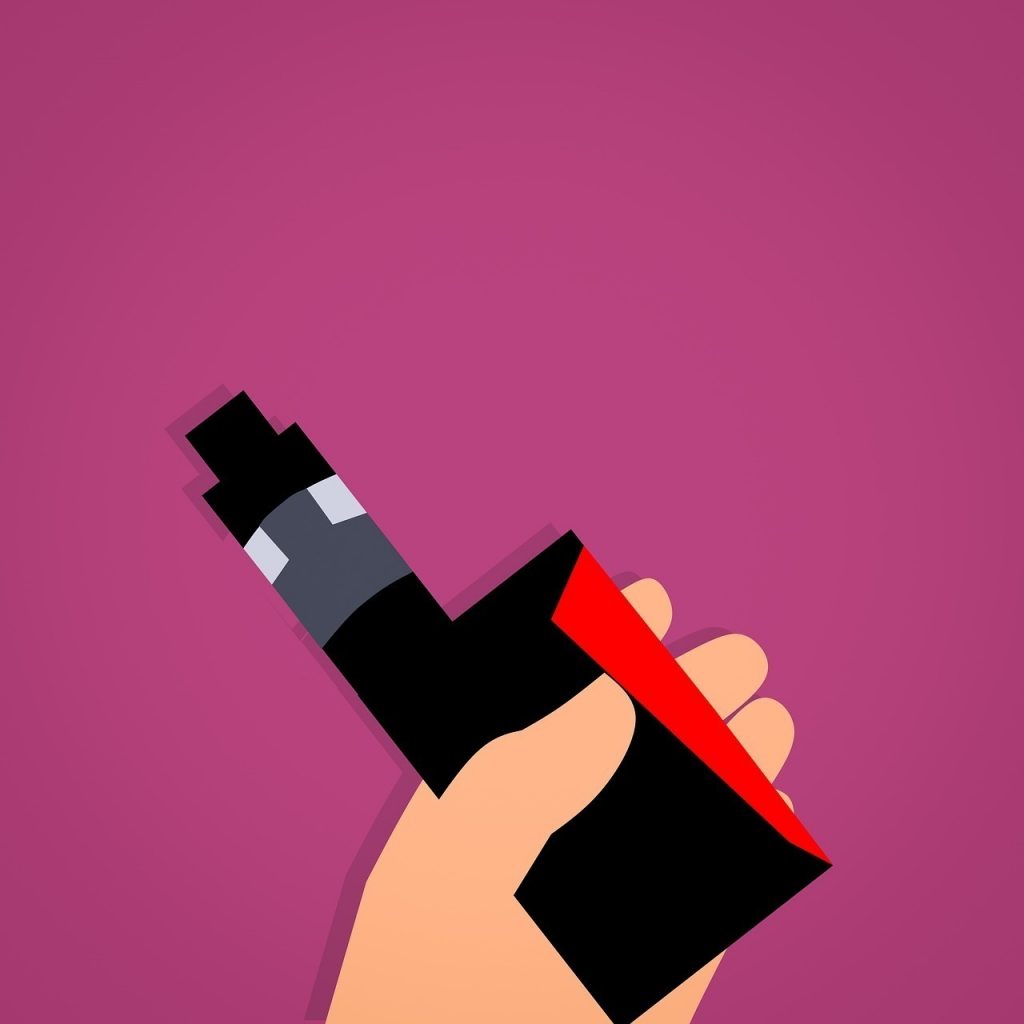
Many, though, still enjoy the ritual of rolling and smoking cannabis. It’s the classic method of consumption, but smoke is hard on the lungs, and it’s often laced with carbon monoxide and carcinogens such as tar and benzene.
Consumers can avoid this by choosing well-designed vape gear and naturally-balanced extracts. This approach tends to win new converts based on taste alone; vaporizing an extract doesn’t incinerate the cannabinoids, but rather it preserves the strain’s flavor and native terpene profile.
It’s said to be a more wholesome method of consumption — one that today’s industry leaders will continue refining. And the connoisseurs of tomorrow will reap the benefits.
At Northern Standard we create premium, full-spectrum cannabis extracts via a proprietary CO2 extraction process. We do not use cutter, fillers, or additives of any kind.
Go here to see where our extracts are available, and view our new line of vape accessories here.
Related Articles
The Rise of American Cannabis Culture
The Rise of American Cannabis Culture The modern cannabis culture is still young. After all, it was completely illegal throughout the US until 1996, when California voted to permit medicinal cannabis. And here in Colorado, we’ve only been able to operate since 2014. ...
The History of Cannabis Criminalization
It’s an unprecedented time in cannabis culture. Many of us can buy some flower or an edible at a corner dispensary right now - which would have been unthinkable in our parent’s time. As legalization progresses in the US and across the globe today, it’s...
The Story of Your Favorite Rock Stars’ Cannabis Arrests
Many of our greatest creatives and musicians have used cannabis as a creative aid - and they did so at a time when consumption was still illegal in nearly every part of the globe. With the extra scrutiny that comes with life under the spotlight, this meant that...

